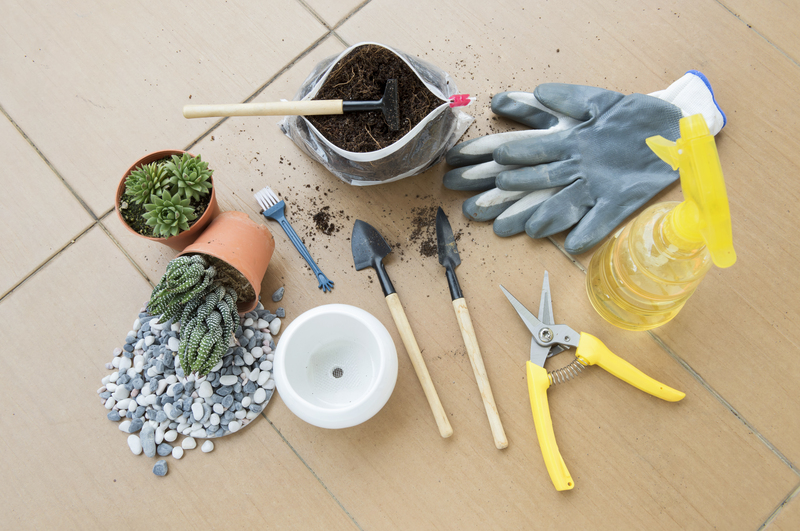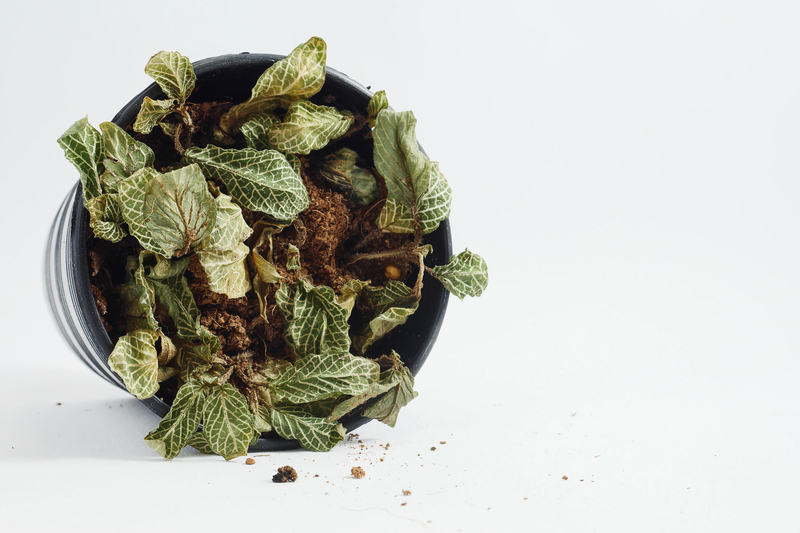Crafting an Herb Garden That Will Thrive
Posted on 01/07/2025
Crafting an Herb Garden That Will Thrive: A Comprehensive Guide
Crafting an herb garden that will thrive is both a practical and fulfilling pursuit. Not only does it provide you with fresh, aromatic herbs for your culinary creations and natural remedies, but it also infuses your home or garden with vibrant life and beauty. Whether you are a gardening novice or an expert looking to refine your herb-growing techniques, this in-depth guide will walk you through designing and maintaining a flourishing herb garden in any setting.
Why Grow Your Own Herbs?
Starting your own herb garden offers a host of remarkable benefits. Homegrown herbs are fresher, more flavorful, and nutrient-rich compared to store-bought counterparts. Beyond enhancing meals, many herbs possess medicinal qualities and contribute to your overall wellness. Plus, nurturing a living garden can be a relaxing and rewarding hobby that connects you with nature daily.
- Cost savings: Growing herbs at home reduces trips to the store and the need to buy single-use plastic-wrapped bunches.
- Guaranteed freshness: Harvest the freshest of herbs at peak flavor, whenever you need them.
- Therapeutic benefits: Gardening fosters mindfulness, reduces stress, and promotes overall happiness.
- Eco-friendliness: A thriving herb garden supports pollinators and introduces biodiversity to your surroundings.

Choosing the Right Location for Your Herb Garden
_The key step in crafting an herb garden that will flourish is proper location selection._ Whether you are planning an outdoor herb garden or looking to cultivate herbs indoors, the best spot will have abundant sunlight, good air circulation, and convenient access for daily care.
Outdoor Herb Gardens
- Sunlight: Most herbs love the sun. Choose a spot that gets at least 6-8 hours of direct sunlight per day.
- Soil: Well-draining soil is essential. Avoid waterlogged or compacted areas.
- Accessibility: Keep your herb garden near the kitchen or outdoor dining area for quick harvests.
Indoor Herb Gardens
- Light source: Position potted herbs on a south-facing windowsill or under grow lights if natural light is limited.
- Temperature: Most herbs thrive between 60?F-75?F (15?C-24?C).
- Humidity: Indoor environments can be dry. Mist herbs regularly or place a tray of water nearby to boost humidity.
Selecting Herbs That Will Thrive in Your Garden
_Choosing the right herbs is crucial for a garden that will thrive and bring abundance throughout the growing season._ Consider your preferences, your local climate, and the purpose of your herb garden. You might want culinary herbs, medicinal plants, or those with ornamental value--choose accordingly.
Popular Culinary Herbs
- Basil: Ideal for summer gardens, featuring many varieties for salads, pesto, and Italian dishes.
- Parsley: A hardy biennial, great for garnishes and cooking.
- Rosemary: Woody perennial with pine-scented leaves, perfect for roasting and bread.
- Thyme: An aromatic and drought-tolerant low grower.
- Cilantro/Coriander: Fast-growing annual for salsa and curries.
- Sage: Perennial with bold flavor for meats and stuffing.
- Mint: Vigorous grower best kept in pots to control spreading.
- Dill: Annual great for pickling and fish dishes.
- Chives: Perennial, mild onion flavor, and beautiful edible flowers.
Medicinal and Beneficial Herbs
- Lemon balm: Calming and aromatic, excellent for teas.
- Lavender: Soothing, fragrant, and attracts pollinators.
- Chamomile: Calming, with daisy-like flowers for tea.
- Echinacea: Immune-boosting blooms for tinctures and teas.
Planning and Designing Your Herb Garden Layout
Crafting an herb garden layout is both a creative and practical process. Whether you're working in a spacious backyard, a small balcony, or a sunny kitchen, tailor your plan to fit your space and lifestyle.
Garden Bed vs. Containers
- Garden beds: Raised beds or in-ground plots allow you to grow larger quantities and even combine herbs with flowers or vegetables.
- Containers: Perfect for patios, balconies, or indoors. Pots allow you to control soil quality and easily rearrange your garden.
Design Tips for Successful Herb Gardens
- Group by growth habit and water needs: Keep moisture-loving herbs together (such as basil and parsley) and separate from drought-tolerant herbs (like rosemary and thyme).
- Utilize vertical space: Stack pots, install shelving, or use wall-mounted planters to maximize space.
- Label your plants: Use attractive plant markers for easy identification and a touch of style.
- Pathways: Ensure easy access to all areas for quick harvesting and maintenance.
Soil Preparation and Planting for a Thriving Herb Garden
Creating the Perfect Soil Mix
- Good drainage: Herbs dislike "wet feet." Mix garden soil with sand, perlite, or compost to promote drainage.
- Organic content: A rich compost adds nutrients and supports beneficial soil microbes.
- pH level: Most culinary herbs prefer a slightly alkaline soil (pH 6.5-7.5). Test and adjust as needed with lime or sulfur.
Seeds or Transplants?
- Seeds: More economical and offer greater variety, but require patience and consistent care during germination.
- Transplants: Quicker results for beginners, with less waiting to see growth and harvest.
When planting, give your herbs enough space to ensure good air circulation and minimize disease. Follow spacing recommendations on seed packets or plant labels.
Watering and Feeding Your Herb Garden
Consistent But Not Excessive Watering
- Herbs generally prefer slightly dry conditions to thrive.
- Check soil moisture by inserting your finger about an inch deep--if it feels dry, water thoroughly.
- _Morning is the best time to water your herb garden_ to avoid evaporation and reduce the risk of fungal diseases.
- Avoid getting foliage wet whenever possible, especially for sensitive plants like basil.
Feeding for Vigorous Growth
- Compost: Top-dress with organic compost every few months to provide nutrients.
- Liquid fertilizer: Use a balanced, organic liquid feed every 4-6 weeks during peak growing season.
- Avoid over-fertilizing: Too much fertilizer can result in lush but flavorless herbs.
Pest and Disease Management for Herb Gardens
Maintaining a thriving herb garden means proactively protecting your plants from pests and diseases. Fortunately, most herbs are fairly resistant--but vigilance is key!
Common Pests
- Aphids
- Spider mites
- Whiteflies
- Slugs and snails (especially outdoors)
Natural Pest Management Tips
- Encourage beneficial insects, like ladybugs and lacewings, to control aphids and other pests.
- Use a strong jet of water to dislodge pests from plants.
- Neem oil or insecticidal soap sprays are effective and safe for edible crops.
- Hand-pick larger pests such as caterpillars and slugs.
Preventing Disease in Your Herb Garden
- Space plants for good air circulation.
- Avoid overhead watering.
- Remove and discard affected leaves promptly.
- Rotate herb locations annually if growing in-ground.
Harvesting and Preserving Your Home-Grown Herbs
Regular harvesting not only allows you to enjoy your herbs but also encourages bushier growth and more abundant harvests. Learn the best practices for reaping an ongoing bounty from your thriving herb garden.
How and When to Harvest
- Pick in the morning: Herbs are most flavorful after dew has dried but before midday heat.
- Use sharp scissors or pruners: Make clean cuts above a leaf node for regrowth.
- Harvest frequently: Especially annual herbs like basil and cilantro, to prevent flowering and promote new growth.
- Avoid removing more than one-third of the plant at a time to prevent stress.
Preserving Herbs for Year-Round Use
- Drying: Air-dry bunches upside-down in a warm, dry place, or use a dehydrator for quicker results.
- Freezing: Chop herbs and freeze in ice cube trays with water or olive oil for convenient use in cooking.
- Infused oils and vinegars: Store fresh flavors in bottles for cooking or gifts.
Year-Round Care: Keeping Your Herb Garden Thriving
Extending the Season
- - Use cloches, cold frames, or row covers to protect outdoor herbs from frost.
- - Bring potted herbs indoors before the first freeze.
Overwintering Perennial Herbs
- - Mulch around the base of perennials like rosemary, thyme, and sage to insulate roots.
- - Reduce watering frequency in winter months to prevent root rot.
Companion Planting
- - Interplant insect-repellent herbs (e.g. basil, mint) among vegetables to reduce pests.
- - Avoid planting aggressive spreaders like mint directly alongside other herbs--use separate containers instead.

Creative Ideas for Your Thriving Herb Garden
- Herb spiral: A spiral bed maximizes space and allows for various microclimates.
- Vertical gardens: Wall-mounted planters or stacked pots are perfect for small spaces.
- Kitchen window boxes: Keep fresh herbs within arm's reach while cooking.
- Herb wheel: Divide a circular bed into sections for different herbs and easy access.
Conclusion: Enjoy the Fruits of Your Labor
Crafting an herb garden that will thrive is a rewarding journey, transforming your meals, health, and overall connection to the natural world. By giving attention to light, soil, plant selection, and ongoing care, your home-grown herbs will reward you with year-round flavors and fragrances. Whether your garden is large or small, inside or out, the steps you take today will bring lasting abundance and joy!
Start your herb gardening adventure now, and you'll soon be savoring the fresh, vibrant tastes of your very own thriving herb garden!

